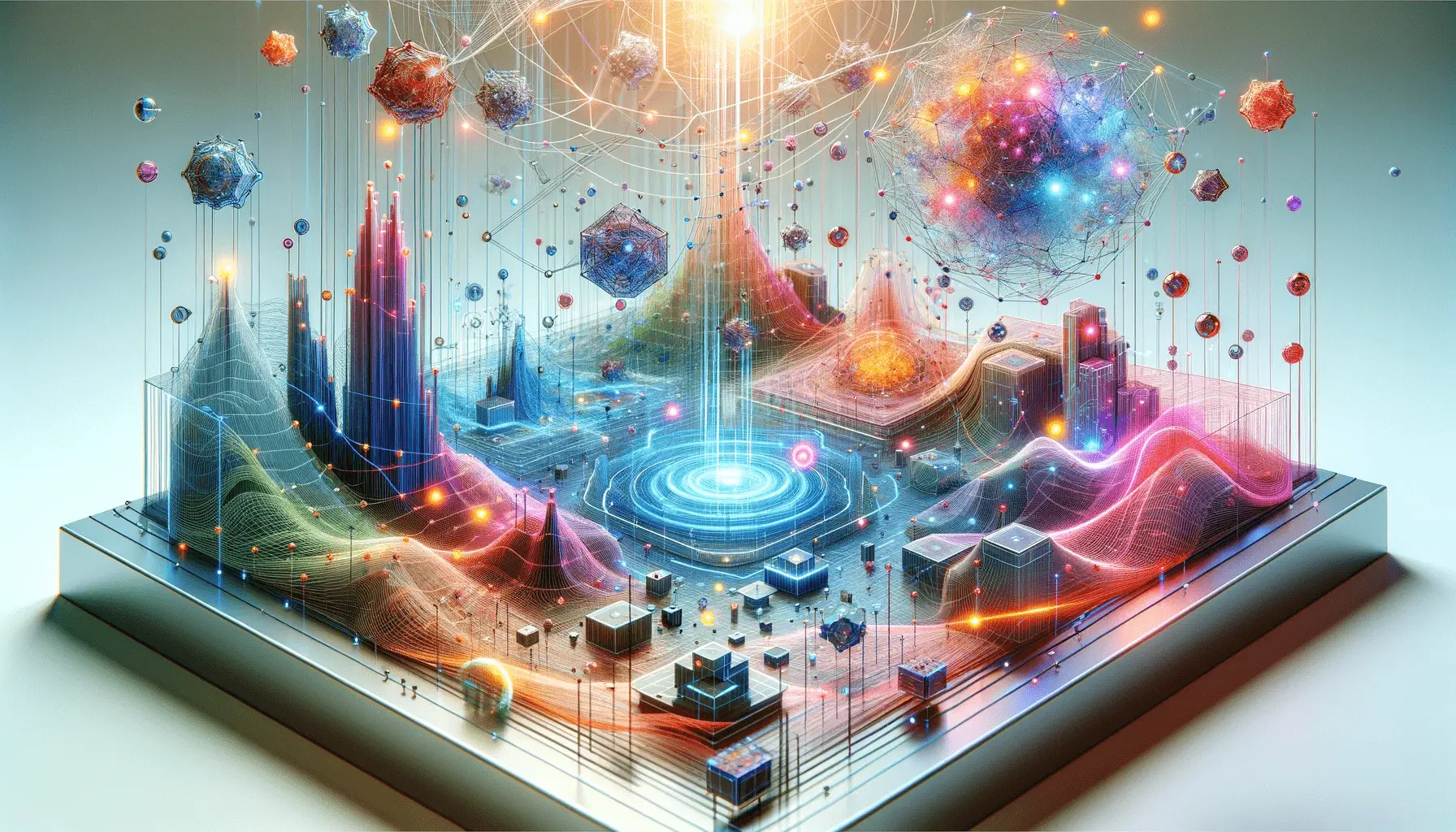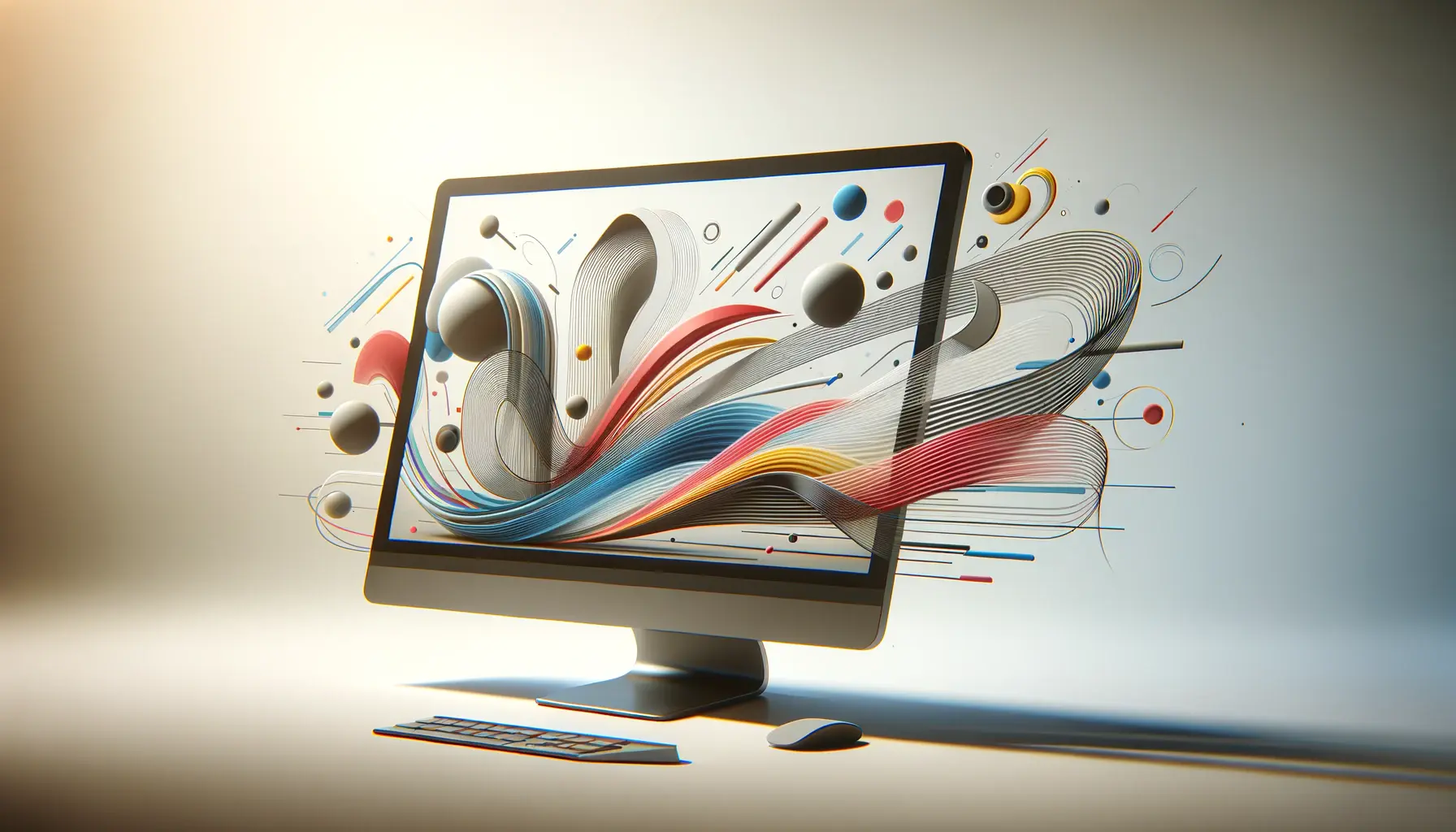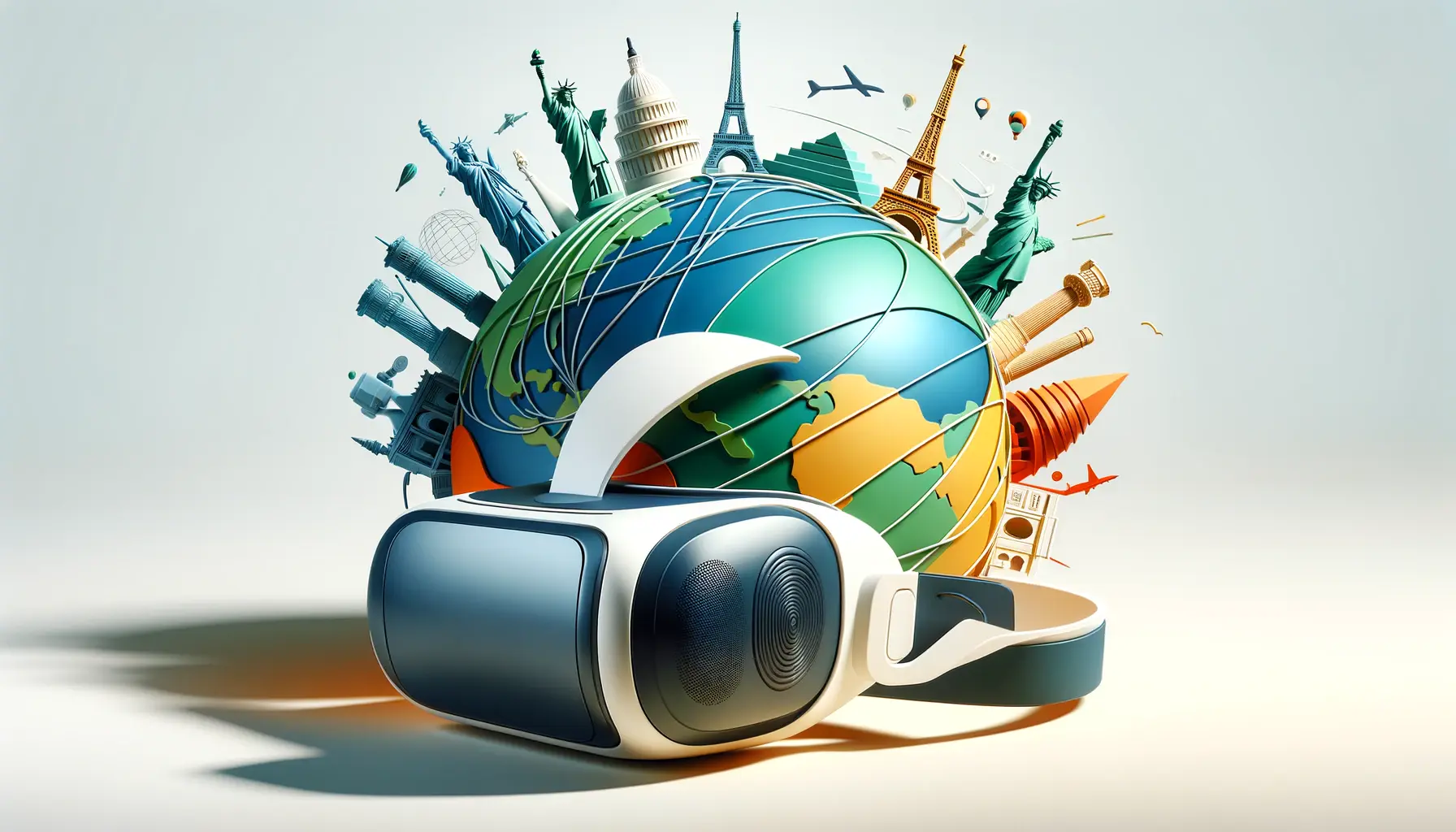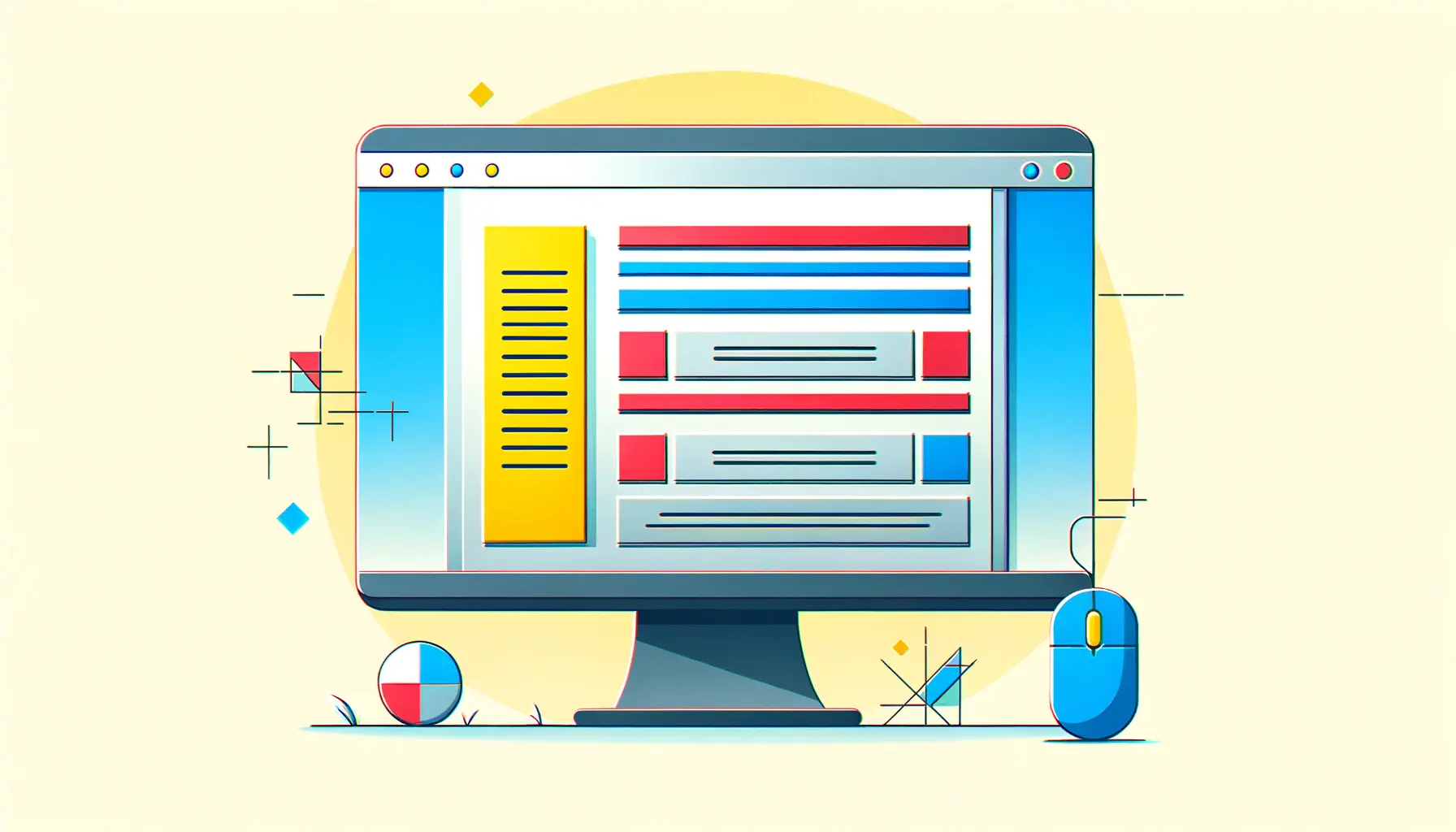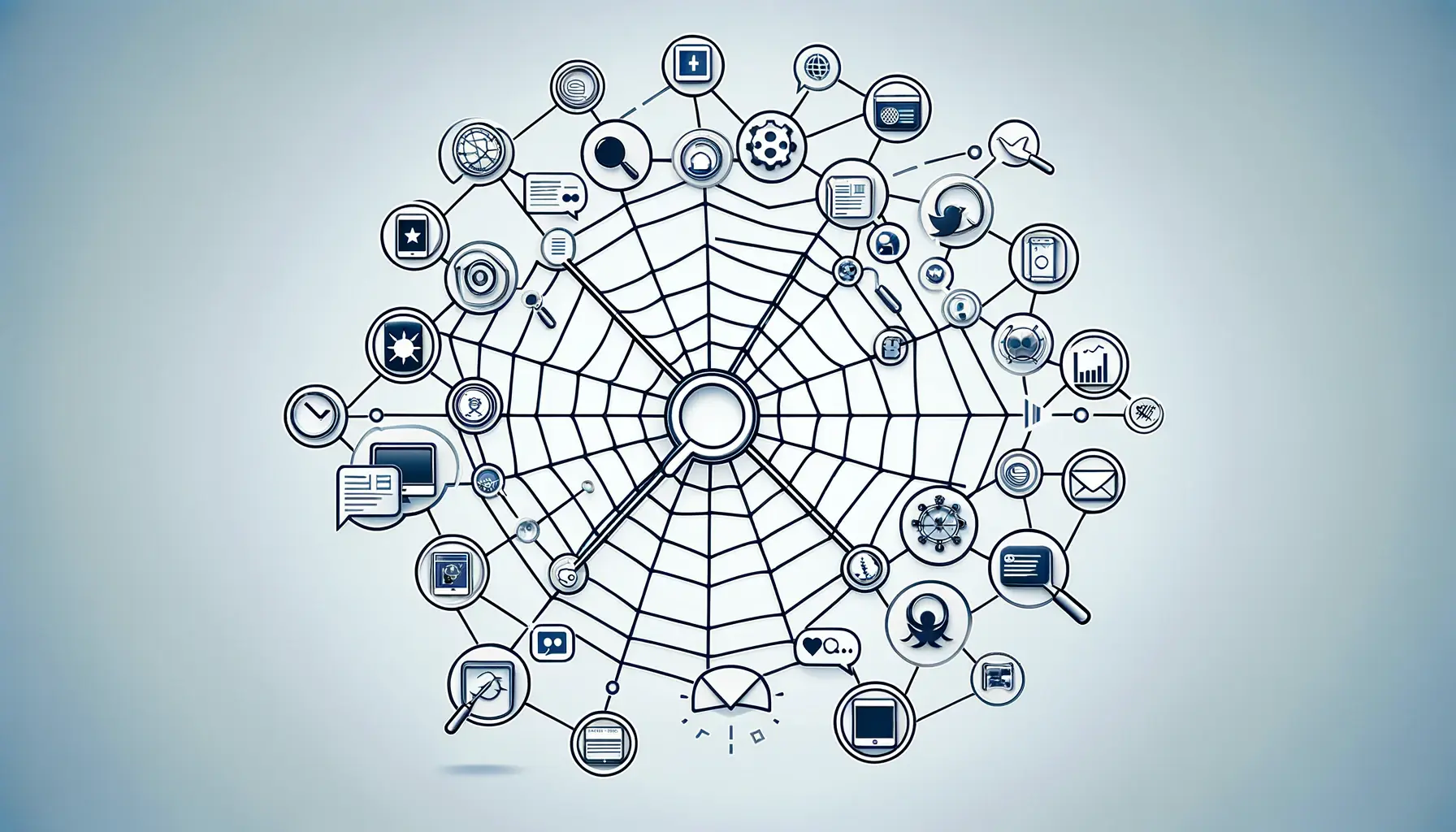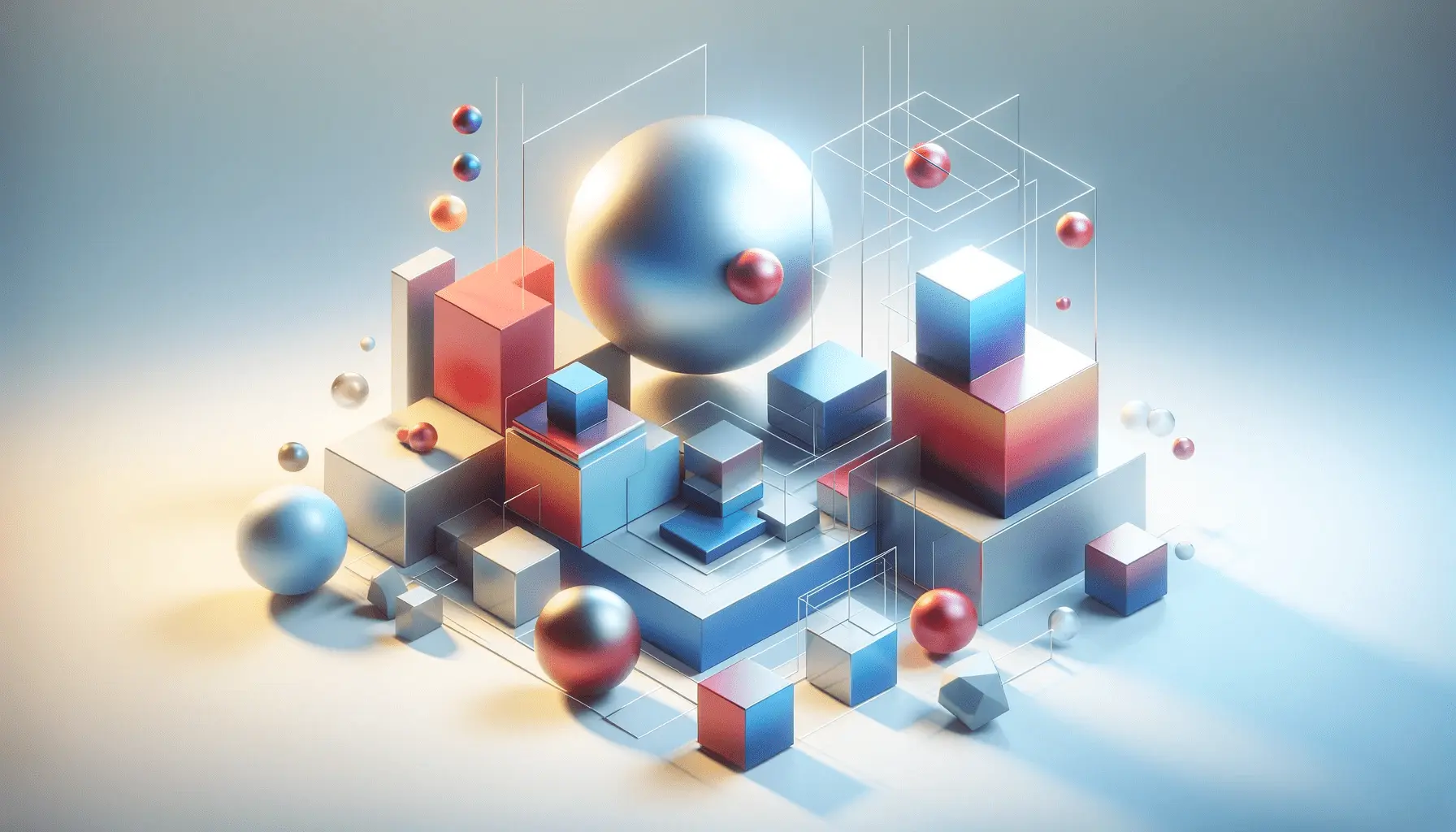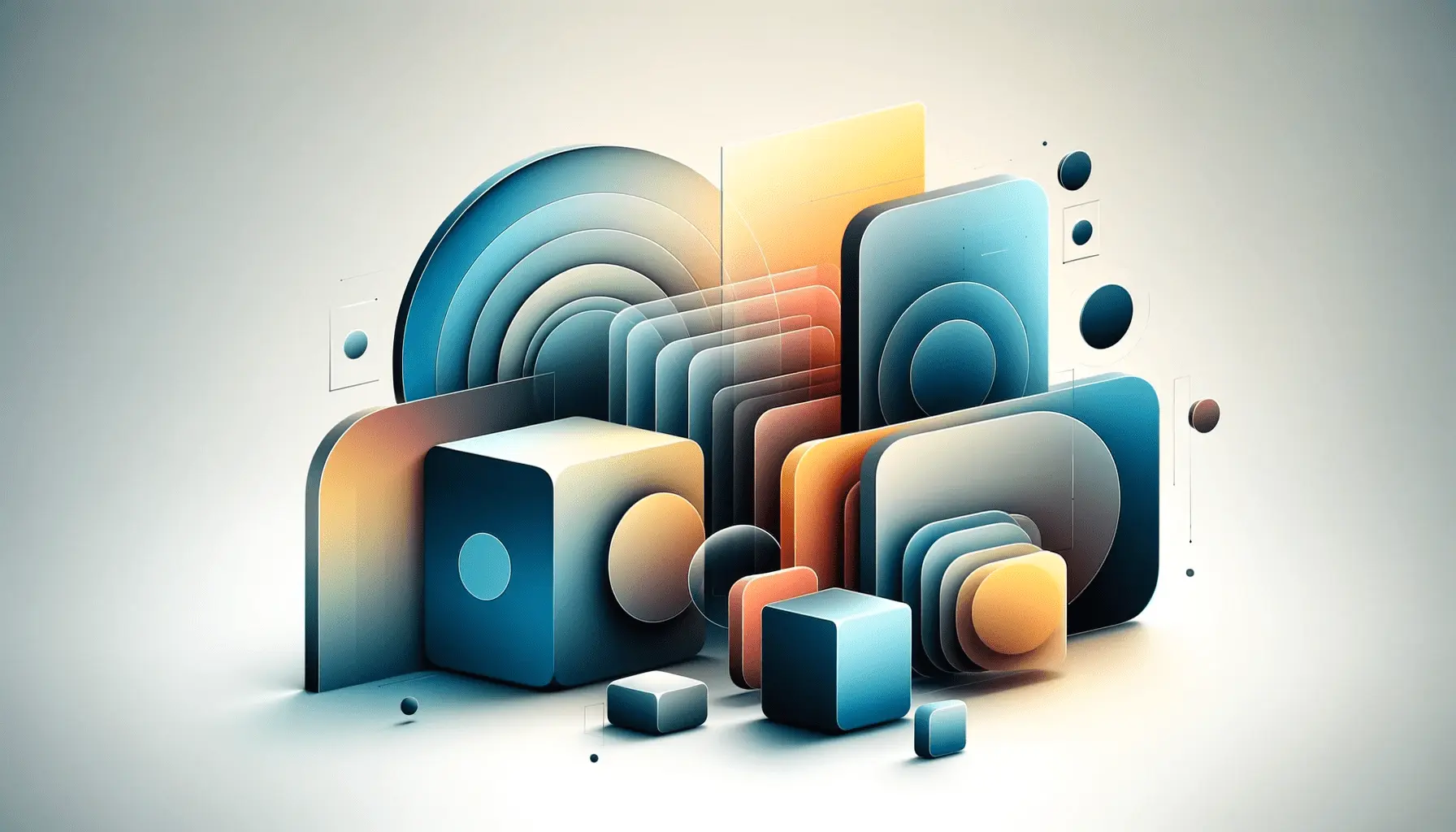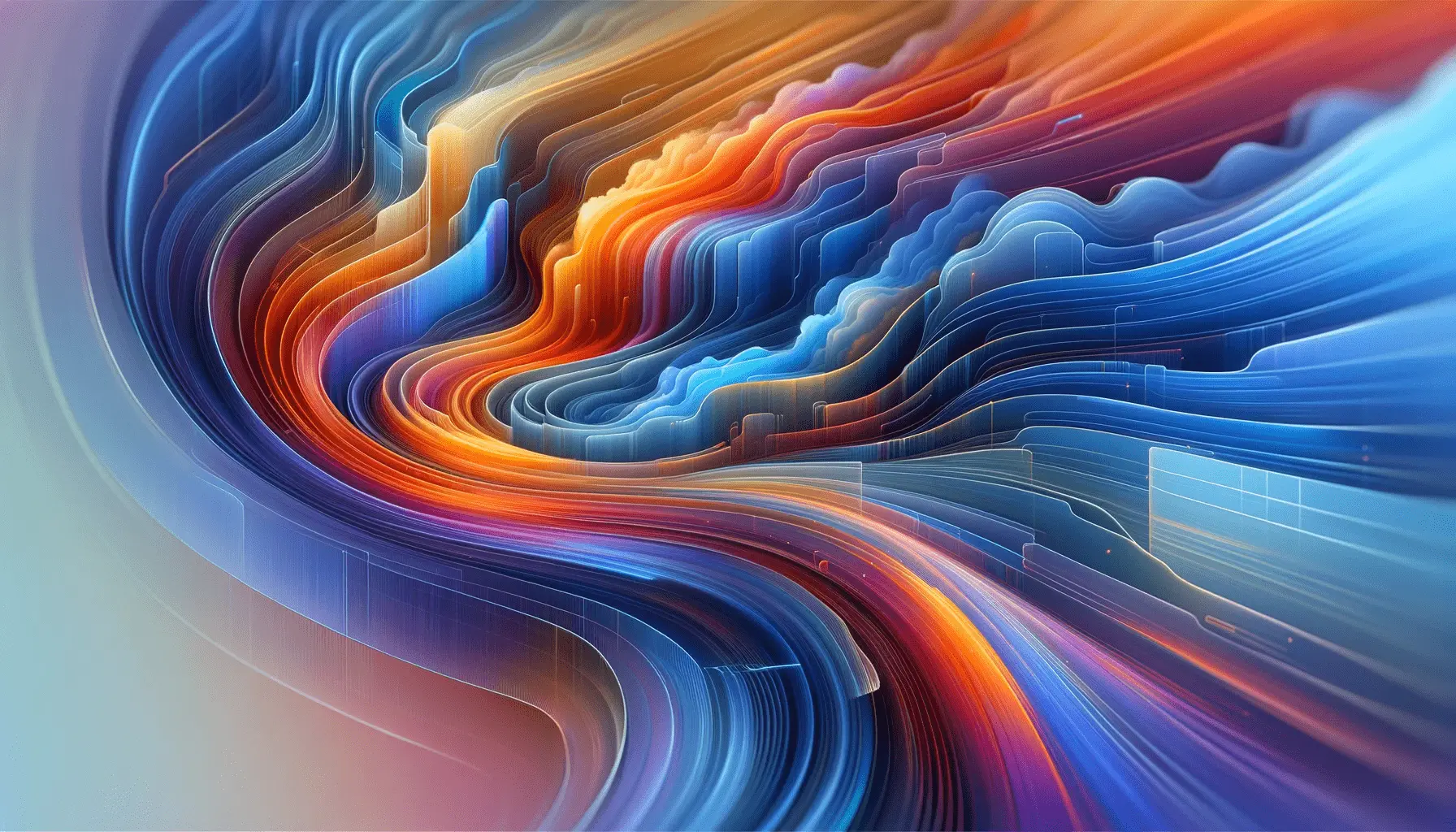In today’s online world, web design has made a historic leap from static pages to interactive immersive 3D worlds.
These multi-dimensional web spaces are not a trend; they are the future of online experience.
With the advent of three-dimensional graphics, web developers can offer users an interactive experience that brings user participation and narrative storytelling to a completely new dimension.
This shift from 2D to 3D web interfaces is transforming how we experience and interact with web content, making it more realistic and immersive.
- Understanding Immersive 3D Worlds in Web Design
- Technologies Enabling Immersive 3D Web Experiences
- Design Principles for Building 3D Web Worlds
- Case Studies of Successful 3D Web Design Implementations
- Future Trends in Multi-Dimensional Web Design
- The Future Is Now: Embracing Immersive 3D Worlds in Web Design
- Frequently Asked Questions about Immersive 3D Worlds in Web Design
Understanding Immersive 3D Worlds in Web Design
Interactive immersive 3D worlds in web design entail the integration of three-dimensional elements in websites, creating environments that can be explored and interacted with by visitors, much like video games.
It is an advancement from the traditional flat designs, adding depth and realism to web pages.
Definition and Significance of 3D Web Environments
Immersive 3D worlds utilize computer graphics to deliver interactive, three-dimensional worlds inside web browsers.
These environments allow users to navigate and engage with content more intuitively and naturally, similar to the real world.
The significance of immersive 3D worlds lies in their ability to deliver immersive experiences that heighten user engagement, facilitate information retention, and offer innovative ways of presenting products or services.
- Enhanced User Engagement: 3D objects are attention-grabbing and encourage users to stay longer on the site.
- Improved Information Retention: Sophisticated information can be rendered more understandable and memorable through interactive 3D models.
- Novel Presentation Innovation: Products or services can be showcased in a more engaging and interactive way, with users having the ability to view them from multiple angles.
Transition from 2D to 3D Web Interfaces
The transition from 2D to immersive 3D worlds represents a significant leap forward in how we perceive and interact with visual data.
In 2D visualization, images are displayed on a flat surface, with the only dimensions being width and height.
This traditional approach has been the standard for most forms of media, from paintings and photographs to graphic design.
However, the move to 3D visualization offers additional depth, realism, and interactivity, transforming user experiences in most industries and uses.
- Early Web Design: Primarily text-based with minimal graphics, focusing on the clear delivery of information.
- Incorporation of 2D Graphics: Utilization of images and videos to make websites more visually attractive.
- Introduction of 3D Elements: Incorporation of 3D models and worlds to create more immersive and interactive user experiences.
This evolution has been driven by advancements in technology, increased speed of the internet, and the need for more interactive web experiences.
Moving forward, the integration of immersive 3D worlds into web design will be the norm, offering users more sophisticated and interactive modes of consuming digital content.
Immersive 3D web design redefines the way users engage with content, bridging the gap between functionality and visual storytelling.
Technologies Enabling Immersive 3D Web Experiences
It has become easier to develop immersive 3D worlds on the web as a result of advancements in various technologies.
These tools enable developers to create interactive and visually stunning experiences directly within web browsers, transforming digital interaction into a more engaging and dynamic process.
Role of WebGL and WebXR in 3D Rendering
WebGL (Web Graphics Library) is a JavaScript API for rendering 2D and 3D graphics in web browser windows without the need for any plugins.
Utilizing the device’s graphics processing unit, WebGL delivers high-quality visualizations as well as real-time effects that are the building blocks of many immersive 3D web experiences.
WebXR brings these capabilities to the next level with a set of standards for immersive experiences like Virtual Reality (VRAbbreviation for Virtual Reality, a simulated experience that can be similar to or completely different from the real world.) and Augmented Reality (ARAbbreviation for Augmented Reality, which overlays digital content onto the real world through devices like phones or AR glasses.) in web browsers.
WebXR allows developers to access the input and output capabilities of VR and AR devices, making it simpler to create rich, interactive 3D web environments.
Introduction to Three.js and Babylon.js Frameworks
To simplify the creation of immersive 3D worlds, a range of JavaScript libraries have been developed.
Two of the most widely used are Three.js and Babylon.js.
- Three.js: A compact, intuitive library that makes rendering 3D graphics within the browser very easy. It’s particularly popular among new users due to its simplicity and strong community support.
- Babylon.js: A feature-rich 3D engine that can be utilized in complex applications such as games and simulations. It offers advanced features including a comprehensive animation system and physics engine, catering to developers aiming to build complex immersive 3D web experiences.
Both frameworks are open source and supported by active communities, with a wealth of resources and plugins to extend their capabilities in building multi-dimensional web experiences.
Innovation in Web-Based Augmented Reality (WebAR)
WebAR takes advantage of the strength of WebXR in delivering native augmented reality experiences directly in the browser, independent of mobile apps.
This allows users to interact with AR content in a seamless and natural way, greatly improving accessibility and the overall user experience.
Developers can create AR sessions that smoothly integrate with existing web content, offering interactive capabilities such as:
- Virtual try-ons for products
- Interactive product demonstrations
- Immersive learning and training platforms
As browser support for WebXR continues to expand, immersive 3D worlds built with WebAR will become even more powerful and widespread, paving the way for more dynamic, engaging, and ubiquitous augmented reality experiences across the web.
WebGL and WebXR are the backbone technologies that make real-time 3D and AR/VR experiences possible directly in browsers—without relying on third-party plugins.
Design Principles for Building 3D Web Worlds
Building immersive 3D worlds for the web requires thoughtful attention that harmonizes aesthetics with usability.
By adhering to key design principles, developers can construct engaging and usable multi-dimensional web worlds that elevate the overall user experience.
Incorporating Depth and Perspective in Design
Appropriate use of depth and perspective is needed in making realistic 3D web environments.
Techniques such as layering, shading, and the rule of thirds can be employed to generate the illusion of depth, drawing the attention of the user and creating a more immersive experience.
- Layering: Positioning objects at varying depths to create the illusion of a three-dimensional space.
- Shading: Employing light and shadow to depict form and spatial relationships.
- Rule of Thirds: Dividing the design into a 3×3 grid to place significant elements in order to have maximum visual impact and balance.
Making 3D Interfaces Accessible
Accessibility is a part of web design, and immersive 3D worlds are no different.
Designers need to add functionality that makes 3D content accessible to all, including users with disabilities.
- Keyboard Navigation: Making all interactive items keyboard-accessible.
- Screen Reader Compatibility: Including text descriptions and semantic labels for 3D objects to enable screen readers.
- Contrast and Readability: Using adequate color contrasts and text sizes to enhance readability for visually impaired users.
Balancing Aesthetics with Performance Optimization
While visual fidelity is an issue, performance optimization is crucial to enable smooth interactions in immersive 3D web environments.
Finding a balance between aesthetics and functionality enhances user satisfaction and ensures a seamless experience.
- Optimal Asset Management: Optimizing 3D models and textures to reduce load times without compromising quality.
- Level of Detail (LOD): Using LOD techniques to dynamically alter the level of detail in 3D models based on the user location, optimizing rendering efficiency.
- Asynchronous Loading: Loading assets asynchronously to prevent blocking the main thread, ensuring a responsive UI.
By utilizing these design principles together, web designers will be able to create interesting immersive 3D worlds that are both visually appealing and interactive, which has the potential to define future multi-dimensional web experiences.
Effective 3D design balances depth and realism with accessibility, ensuring the visual experience is as functional as it is captivating.
Case Studies of Successful 3D Web Design Implementations
The use of interactive immersive 3D worlds in web design has revolutionized user interaction and engagement.
Let’s talk about some of the most notable case studies that highlight the successful implementation of 3D in web design.
NASA’s Interactive Mars Rover Experience
NASA developed an interactive web application called ‘Experience Curiosity’ to mark the third anniversary of the Mars landing of the Curiosity rover.
The application allows users to operate the rover, utilize its cameras and robotic arm, and relive milestone moments of the Mars Science Laboratory mission.
By leveraging 3D web technologies, NASA provided an engaging learning tool that makes space exploration more accessible to users.
The 3D Artifact Exploration of the British Museum
The British Museum embraced immersive 3D worlds to enhance its web presence through the offering of 3D models of artifacts.
This allows individuals to view ancient treasures in their homes, making cultural education more accessible and fun.
The use of 3D features has increased traffic on their website and attracted commendation for enhancing the online museum experience.
IKEA’s Virtual Furniture Showroom
IKEA’s 3D website allows customers to browse furniture and home décor in a virtual environment, providing a true-to-life shopping experience.
This innovative approach enables users to imagine products in their own space, enhancing decision-making and overall customer satisfaction.
Puma’s Interactive Product Displays
Puma’s product landing pages employ 3D models to showcase the features of their footwear.
Shoppers can interact with the products, viewing them from different sides and exploring details in depth, leading to enhanced levels of user satisfaction and involvement within these immersive 3D web experiences.
HP23’s Presentation of Bionic Prosthetics
HP23, a bionic prosthetic manufacturing firm, employed 3D web design in a successful representation of their products.
They created a realistic and detailed 3D model of a prosthetic arm using BlenderA free and open-source 3D creation suite used for modeling, animation, and rendering. and animated it for an engaging presentation.
This process generated informative and captivating visual content, enhancing user understanding and engagement.
These case studies demonstrate the potential of virtual immersive 3D worlds in web design to create engaging, interactive, and informative user experiences across various industries.
Real-world examples like NASA and IKEA show how 3D web design can deliver immersive, educational, and commercial experiences that boost engagement and impact.
Future Trends in Multi-Dimensional Web Design
The world of web design is ever-evolving, and new trends emerge that leverage modern technology to create more immersive 3D worlds and interactive user experiences.
Let us explore some of the emerging future trends in multi-dimensional web design.
Integration of Virtual and Augmented Reality
The convergence of virtual reality (VR) and augmented reality (AR) with web development is intriguing users.
Websites can provide immersive experiences by marrying digital content with real environments.
By combining VR and AR, immersive 3D web experiences become more interactive, offering new modes of conveying information.
AI-Driven Design Automation
Artificial intelligence (AI) is transforming web design by streamlining many tasks associated with the design process.
AI solutions are able to assist in creating personalized user experiences, optimizing layouts, and even generating content.
This makes the process more efficient while adapting to each user’s individual needs within immersive 3D worlds.
Emphasis on Microinteractions
Microinteractions are subtle, often invisible design elements that improve user experience by offering feedback, guiding tasks, or simply delighting users.
As 3D web environments advance, there’s a growing emphasis on incorporating thoughtful microinteractions to make interfaces more intuitive and engaging.
Adoption of Minimal Maximalism
Minimal maximalism is a recent design trend that merges the simplicity of minimalism with bold, expressive features.
This approach allows designers to produce clean, functional layouts that are also visually impactful, striking a balance between simplicity and powerful design in multi-dimensional web projects.
Sustainable and Eco-Friendly Design Practices
There is increasing focus on sustainability in web design, and designers are embracing green principles.
These include:
- Energy-efficient website optimization techniques
- Environmentally conscious color palettes
- Designs that promote environmental awareness and responsibility
With these trends, designers can create three-dimensional web experiences that are not only pleasing to the eye but also innovative, user-centric, and environmentally sustainable.
Trends such as AI-driven automation, WebAR, and eco-friendly design practices are paving the way for the next evolution of immersive digital experiences.
The Future Is Now: Embracing Immersive 3D Worlds in Web Design
The Significance of Immersive 3D Worlds
The trend toward interactive immersive 3D worlds in web design is not just a trend but a digital revolution that transforms how humans interact with web content.
With technology continuing to evolve, the demand for richer, more interactive web experiences has accelerated.
Interactive product presentations, virtual showrooms, and training simulations are all possible with immersive 3D design, opening up new possibilities to connect with audiences in previously unimaginable ways.
By adding elements of depth, perspective, and interactivity, designers can craft environments that live and breathe.
These multi-dimensional experiences not only enhance aesthetics but also boost engagement, retention, and brand connection—foundational goals in today’s highly competitive online landscape.
Key Takeaways from the Rise of 3D Web Design
Throughout this article, we’ve explored many facets of immersive 3D web design.
Here’s a quick summary of the biggest takeaways:
- Immersive 3D Worlds: A comprehension of these worlds, which offer dynamic and interactive experiences beyond traditional flat web pages.
- Technological Foundations: Technologies like WebGL, WebXR, Three.js, and Babylon.js have made it possible to create high-quality, browser-based 3D experiences.
- Design Best Practices: Thoughtful design principles—like accessibility, depth, performance optimization, and microinteractions—ensure these experiences remain usable and inclusive.
- Real-World Success: Companies like NASA, IKEA, and Puma are already leading the way, proving that interactive 3D web experiences can revolutionize user engagement and satisfaction.
- Emerging Trends: The future is moving toward AI-powered design, sustainable practices, and the overall use of AR and VR in multi-dimensional web design.
What This Means for Designers and Developers
For developers and creatives, diving into interactive 3D environments isn’t a matter of keeping pace—it’s a matter of future-proofing digital strategies.
As expectations rise among users, so must the capabilities of the web.
By incorporating immersive 3D worlds and workflows today, creative professionals can craft experiences that stand out, captivate audiences, and drive measurable results.
Regardless of whether you’re creating e-commerce websites, educational content, entertainment, or virtual services, the principles of immersive 3D design remain the same across industries.
With the right tools, a user-focused mentality, and a passion for pushing the boundaries, your next project could very well reshape the manner in which users interact with the web.
Looking Ahead to Immersive 3D Web Design
The journey into immersive, multi-dimensional web design has only begun.
As browsers continue to develop and devices in users’ hands become more capable, the possibilities for creating astounding, accessible, and practical 3D experiences will only grow.
The time is now to explore, experiment, and embrace the future of the web—one immersive 3D environment at a time.
By embracing immersive 3D design today, creatives can stay ahead of the curve and build web experiences that are future-ready and user-centric.
Quality web design is key for a great website! Check out our service page to partner with an expert web design agency.
Frequently Asked Questions about Immersive 3D Worlds in Web Design
As immersive 3D worlds have joined the field of web design, many questions are asked about their application and impact.
Below are some of the most common questions to enlighten this growing field.
An immersive 3D web experience uses three-dimensional elements on websites, where users engage with content in a more lifelike and interactive way.
WebGL is a JavaScript API that allows interactive 2D and 3D graphics to be rendered in web browsers using the device’s GPU, without plugins.
WebXR enables immersive experiences such as Virtual Reality (VR) and Augmented Reality (AR) directly through web browsers using a unified set of standards.
Three.js and Babylon.js simplify the development of interactive 3D content by providing comprehensive libraries for rendering and managing 3D environments.
3D features increase user interaction, improve memory retention, and offer new creative ways to showcase products or services more engagingly.
Shifting from 2D to immersive 3D worlds introduces realism, interactivity, and deeper engagement, making experiences feel closer to real-life interaction.
Examples include virtual showrooms, interactive product demos, educational tools, and storytelling platforms powered by immersive 3D worlds.
Accessibility in 3D environments is achieved through keyboard navigation, screen reader compatibility, and sufficient color contrast and readability.
Microinteractions are subtle design cues that provide feedback or guidance, improving usability and enjoyment in 3D web environments.
AI enhances 3D web design through automation, personalization, and performance optimization, creating more dynamic and user-focused environments.
Sustainable 3D web design maximizes efficiency, reduces energy usage, and aligns digital strategies with environmental responsibility.
VR and AR are used via APIs like WebXR to embed immersive 3D experiences directly into web browsers, merging digital and real worlds.
Challenges include performance optimization, accessibility, cross-browser support, and managing the complexity of 3D development workflows.
Performance is improved through efficient asset use, level of detail (LODShort for Level of Detail; a technique used to reduce the complexity of 3D models based on the viewer’s distance.) techniques, and asynchronous content loading in 3D web environments.
Popular tools include JavaScript libraries like Three.js, Babylon.js, and design platforms like WebflowA web design tool that allows users to build responsive websites visually without coding. and Spline.designAn online platform for designing and collaborating on 3D web experiences in real time..
Immersive 3D web designs offer more dynamic and interactive user experiences compared to flat, traditional 2D layouts.
3D web design involves higher upfront costs but often yields better engagement and ROI due to its interactive nature.
Responsive 3D design ensures content adapts seamlessly across devices and screens while maintaining interactivity and accessibility.
